Apple unveils four iPhone 12 models with 5G capability
Apple has embraced 5G, unveiling four iPhone 12 models, but faster 5G mmWave won’t be on Australian handsets.
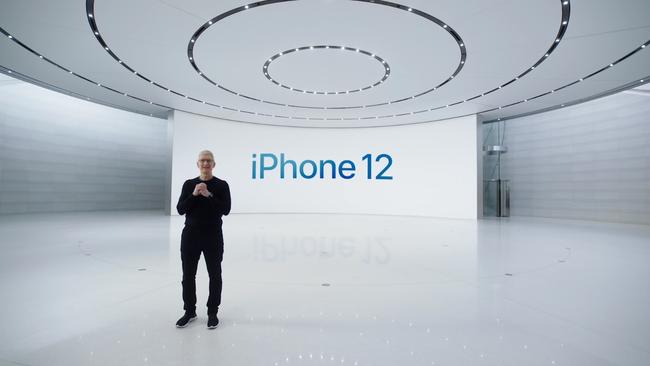
Apple has embraced the new communications world of 5G with four iPhone 12 models that also feature much faster processors and magnetic charging.
But none of the four models will support a faster form of 5G coming to Australia called mmWave, and Apple hasn’t adopted the growing industry standard of using a fast USB-C cable for charging and data transfers to and from the device.
Apple has also made a renewed thrust into home control and automation with a smaller $149 HomePod mini smart speaker, that with its increased affordability, will rival the standard Amazon Echo and Google Home personal assistant devices. Users can more easily command Siri to control your home lighting and smart appliances.
See Apple has unveiled an affordable HomePod mini speaker.
However the star of the show was the iPhone 12 which was announced early today in a streamed event from Apple headquarters in Cupertino.
iPhone 12 and iPhone 12 mini
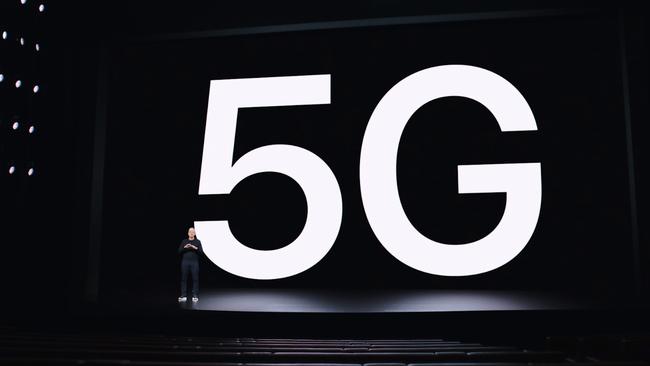
The first two models, the iPhone 12 and iPhone 12 mini, are the same except for the screen size – 6.1 inches as against 5.4 inches.
As predicted, this year’s iPhones have a metallic frame around the edges which look similar to iPhone 4 and 5. Apple didn’t explicitly announce the reason for this, but it’s likely due to the 5G antenna system around the edges of the phones.
All phones are available in black, white, red, green and blue and you choose between 64, 128 and 256 GB of storage.
These models are compatible with Australia’s sub-6 Gigahertz 5G bands but this year’s iPhone models won’t support the even faster mmWave 5G that will be used in some high density locations such as stadiums and busy city areas more into the future.
This won’t matter for now, but it likely will matter during the life of a new iPhone. Some Android phones already support mmWave.
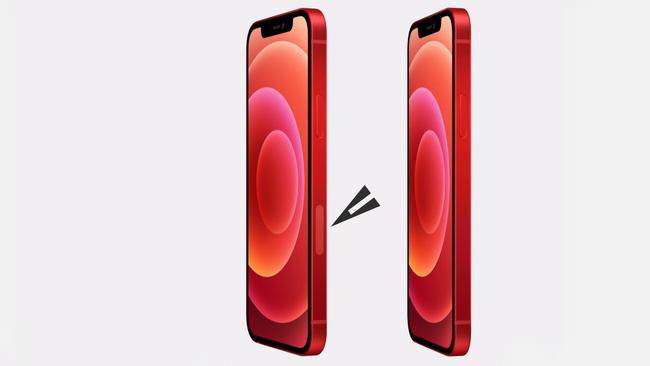
Apple is only making mmWave available on US iPhone models. We asked Apple Australia to clarify this. “As confirmed in the keynote, all iPhone 12 models in the US will support mmWave,” it says. “The rest of the world has good mid band spectrum available, which provides substantial speed gains vs LTE,” it says when asked about this.
This is further borne out by photos of iPhone 12 handsets on Apple’s US website and its Australian website (above). They are different. The US phone (left) has a small window on the side towards the bottom, the Australian phone (right) does not. The editor-in-chief of the Verge Nilay Patel in a tweet earlier said he had confirmation that the window is for an mmWave antenna.
Other new features of iPhone 12 include a much faster A14 bionic chip that leaked Geekbench benchmark tests rated at considerably faster than the iPhone 11 chip set.

The 5G capability brings with it new experiences. One included the ability to view an NFL match through seven different camera angles simultaneously, a feature that the US carrier Verizon showed off at the virtual event.
Another is 5G gaming on the go. Apple showed a clip of a user playing the processor intensive League of Legends game being played on iPhone 12 on 5G, without a Wi-Fi connection.
Apple says 5G will also support FaceTime calls in high definition video.
You may not use 5G constantly, so the phone will switch back to 4G LTE and can do so to preserve battery life.
These two iPhone models also have higher resolution displays with 460 pixels per inch and a new “ceramic shield coating” on the glass which Apple says delivers a four times better “drop performance”.
Apple has opted for new charging solutions of its own. There are now “MagSafe” magnets embedded in the back of the iPhone that will connect to a charger directly. You can also connect accessories to the phone that Apple will sell such as wallets.
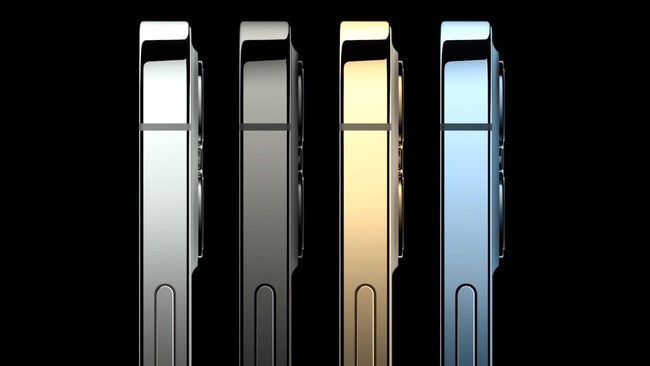
A dual MagSafe charger will let you charge both an iPhone and Apple Watch at the same time.
Instead of providing a USB-C to USB-C cable, Apple is shipping iPhone 12 models with a USB-C to Lightning connector, which means you can plug the cord into a more modem charger with a USB-C slot.
Apple said it would no longer offer chargers in the box. It says people already are likely to own many already; there were already about two billion of them in the world. The environmental saving was the equivalent of the output of 450,000 cars.
The phones feature a dual camera system with an ultra wide lens and new wide lens with a f/1.6 aperture for better low light photography. Apple says it has improved night mode shots which can be snapped with either lens. Users can now shoot HDR video with Dolby Vision grading processed while recording and continued during editing.
Pricing and availability
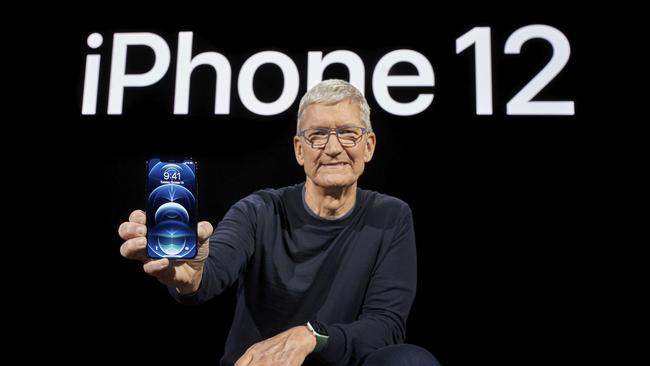
All iPhone models in Australia will cost four figure amounts.
The iPhone 12 and iPhone 12 mini will start at $1349 and $1199 respectively.
Apple additionally unveiled two higher specced Pro models – the iPhone 12 Pro and iPhone 12 Pro Max starting at $1699 and $1849 respectively. For starters they offer more storage: 128GB, 256GB and 512GB.
Pre-order times and availability differ between models. Pre-orders for iPhone 12 mini, iPhone 12, iPhone 12 Pro and iPhone 12 Pro Max begin on November 7, October 16 (11pm), October 16 (11pm) and November 7 respectively.
Models are available from November 13, October 23, October 23 and November 13 respectively.
iPhone Pro and iPhone Pro Max
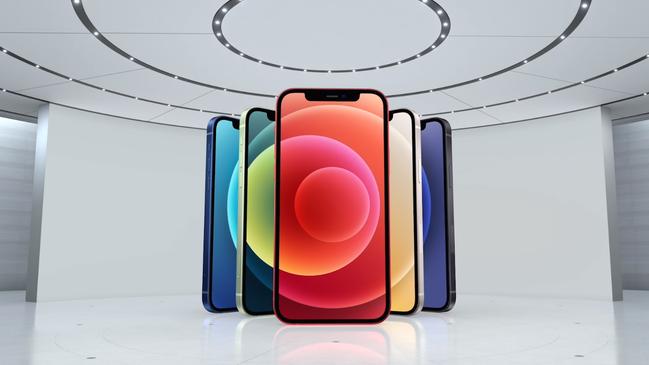
The premium iPhone models are bigger, offer a better Pro camera system, and include a LIDAR sensor for better augmented reality experiences.
These two are different sizes – the Pro has a 6.1-inch display (the same size as regular iPhone 12) while the Pro Max has an even bigger 6.7-inch one. Both feature OLED screens with about 460 pixels per inch resolution that support HDR (high dynamic range media), with a 2 million to one contrast ratio. Both have Apple’s new ceramic shield coating for more protection should the phone drop to the floor.
Both models have Apple’s A14 Bionic chip, are rated IP68 dust and water resistant at 6 metres for up to 30 minutes.
The colour range is different: graphite, silver, gold and pacific blue. They have textured matt glass backs and again metal edges.
Again, they can be charged with the MagSafe chargers and used with MagSafe accessories that snap onto the back.
The big story is the improvements to the camera system of four lenses and they start with Apple ProRAW, which combines Apple’s multi-frame image processing and computational photography to shooting in the RAW format.
There’s pixel by pixel processing of photos using deep fusion which Apple senior vice president Greg Joswiak says uses machine learning to achieve “unprecedented detail, texture, and minimum noise”.
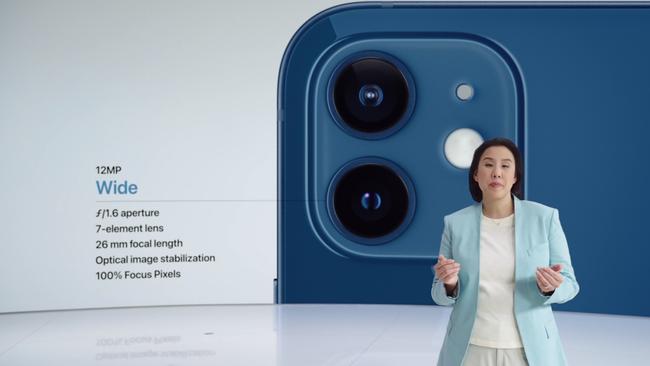
Multiple images are captured and processed through the phone’s image signal processor. It is complex to explain – it might be easier to say you get the benefits of RAW photography and the pizzazz of the processing available with Apple’s new chip. This feature will come to the camera app later this year.
Mr Joswiak says all four camera lenses have this deep fusion capability including the front facing TrueDepth camera.
The Pro camera system comprises a 12MP ultra wide lens with a 13mm focal length, and 120-degree field of view, and a 12MP wide camera with a f/1.6 aperture, 26mm focal length, and optical image stabilisation. There’s also a 12MP telephoto lens with 4x optical zoom, f/2.0 aperture, 52mm focal length and again optical image stabilisation.
There’s also a 12MP telephoto lens with 4x optical zoom, f/2.0 aperture, 52mm focal length and again optical image stabilisation.
The bigger Pro Max has a different lens configuration. Again you get a 12MP telephoto lens but this time the focal length is 65mm but the optical zoom is less at 2.5x. Apple says the larger focal length offers longer framing.
The 12MP wide lens again has a f/1.6 aperture and a 26mm focal length, new sensor and new system for optical image stabilisation. Apple’s manager of camera systems engineering Andrew Fernandez says the larger pixels and faster aperture means an 87 per cent improvement in low light photography, presumably compared to last year.
There’s also a new optical image stabilisation sensor. The OIS system can make “5000 micro adjustments per second” and stabilised exposure times of up to 2 seconds in low light for hand held shots.
Apple is yet to convince the world of the usefulness of its augmented reality (AR) features. I have found the virtual tape measure app handy; I used it recently to measure new bathroom basins at Bunnings but haven’t used it much beyond that yet.\
Nevertheless the Pro models will feature a LIDAR (light detection and ranging) scanner that will allow the phone to more accurately measure the distance to objects for use in AR situations.
LIDAR achieves this by sending out laser pulses. LIDAR of course is used in autonomous car systems for this purpose.
On the iPhone it means it can more accurately assess the distance to objects in the real world so that scenes will be more accurate and realistic when it adds imaginary objects to create those AR experiences.
Apple says the LIDAR sensor will also be used in photography to enhance auto-focus and to improve low light scenes.
Confused about the models? Apple has this page where you can compare them.
You can also watch Apple’s keynote here.
MagSafe for iPhone

Apple says the current wireless charging experience has deficiencies. If you don’t place a phone in exactly the right position on a wireless charging surface, it doesn’t charge. Its answer is to place a magnet near the back of the phone, so that it clips onto a charging device. It says the system can safely provide 15 watts of battery charging.
The system comprises not only magnets, but a Nanocrystalline shield for safety and magnetometer and Near Field Communication (NFC) which it says can react to the magnetic field strength.
Apart from the MagSafe charging device and a dual MagSafe charger for iPhone and Apple Watch, there’s a new range of accessories such as covers that will snap onto the phone. You’ll also be able to snap the MagSafe charger on top of a phone case. Apple will also sell a magnetic wallet that snaps onto the rear of the case.
Apple says Belkin has been working on a car mount and multi-charger dock for MagSafe.






To join the conversation, please log in. Don't have an account? Register
Join the conversation, you are commenting as Logout